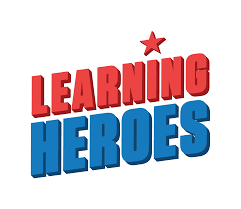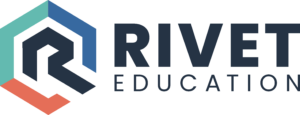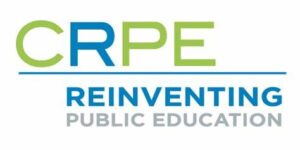Over the past three years, the Center for Education Policy Research has partnered with nonprofits, advocacy organizations, researchers, and more to better understand how recovery dollars were spent and what programs or interventions are working to help kids catch up.
Chronic Absenteeism
Related Research:
- Continued High Levels of Chronic Absence, With Some Improvements, Require Action
- Root Causes of Chronic Absence
- 3 Tiers of Intervention
“The chronic absence wave that raced through the country during the pandemic continues to overwhelm many schools and districts,” said Hedy Chang, Executive Director, Attendance Works. “This persistent absenteeism not only impacts learning, it affects students’ social development and executive functioning. We know this is a challenge, and we also know that when states and districts take a comprehensive, team-driven approach to improving engagement and attendance, using data – and insights from students and families – to drive solutions, it will improve.”
Contact: Catherine Cooney, catherine@attendanceworks.org
Thomas Dee, Barnett Family Professor, Stanford Graduate School of Education
Related Research:
- Higher Chronic Absenteeism Threatens Academic Recovery from the COVID-19 Pandemic
- No One-Size-Fits-All Solution to Chronic Absenteeism
“The enduring pandemic flight of students from public schools both disrupted learning opportunities and exacerbated the fiscal challenges many school districts now face. Sharp and sustained increases in chronic absenteeism add another serious barrier to education recovery. However, research provides hopeful evidence on cost-effective and scalable solutions.”
Contact: tdee@stanford.edu
Todd Rogers, Weatherhead Professor of Public Policy, Harvard Kennedy School
Related Research:
- 3 Things You Need to Know About Absenteeism
- Reducing Student Absences at Scale by Targeting Parents’ Misbeliefs
“Being in school matters for learning in school, and too many students are missing too many days. Research has uncovered a few strategies for increasing attendance, but more must be done to identify strategies that work.”
Contact: todd_rogers@hks.harvard.edu
Related Research:
- B-flation: How Good Grades Can Sideline Parents
- Investigating the relationship between pre-pandemic family engagement and student and school outcomes
- Designing Family Engagement Strategies That Lead to School Success
“Amid declines in the new NAEP data, we still have almost nine in ten parents who say their child is at or above grade level,” said Bibb Hubbard, Founder and President, Learning Heroes. “This disconnect sidelines parents’ ability to partner with teachers and help stem the downward trend in reading and math. Research from Learning Heroes and TNTP shows that schools with strong family engagement pre-pandemic experienced much smaller increases in chronic absence post-pandemic, have slightly better achievement scores and better test-taking rates. In fact, a school’s pre-pandemic family engagement was more strongly related to chronic absenteeism than the percent of low-income students it serves. Given we still have a long way toward recovery, this is a call to action for schools and districts to prioritize family engagement practices as a core strategy to improving student outcomes for all kids. This includes supporting families and teachers to team up based on multiple measures of data as well as parent and teacher observations. With a more accurate and actionable understanding of student progress, parents can be a strong lever in addressing learning loss.”
Interested in learning more or speaking to someone from Learning Heroes? Please contact: press@learningheroes.org
Dr. Robert Balfanz, School of Education Distinguished Professor and Director, Everyone Graduates Center, Johns Hopkins University
Related Research:
“The good news is that evidence-based strategies to reduce chronic absenteeism exist. We know that family engagement, student success systems, and school-based supports—such as mentoring, high-dosage tutoring, and wraparound services—can make a significant difference. The challenge is weaving them into a comprehensive response that includes prevention, problem-solving, and mitigation efforts.”
Contact: rbalfanz@jhu.edu
High-quality Instructional Materials
Related Research:
“High-quality data is about more than just numbers – it’s the foundation of informed decision-making,” said Lora Kaiser, Executive Director, Center for Education Market Dynamics. “Using data to understand the instructional materials selected by districts nationwide is critical. Without visibility into the curricula students have access to, it is hard to fully understand the opportunities or barriers shaping their outcomes.”
Contact: kdombrowski@cemd.org
Annie Morrison, Rivet Education Co-Founder and Principal Consultant
Related Research:
“A curriculum cannot deliver results on its own. The difference between transformation and the status quo lies in how teachers and leaders bring it to life. But implementation is complex, requiring a clear roadmap to guide actions, track progress, and celebrate wins. Success also depends on consistent, role-specific learning that keeps teachers and leaders at the center of instruction and allows them to plan, learn, and grow in community. States and districts that invest in strategic implementation are seeing real results—offering lessons the rest of the country can follow.”
Contact: claire.rivero@riveteducation.org
Related Research:
- 4 Steps to Ensure High-Quality Curriculum Leads to Impact
- Quality Curriculum Drives Evidence-Based Teacher Practices
- High Quality Materials Are Available—So Why Aren’t They Being Used?
“All students and teachers deserve high expectations for the work they do in our classrooms,” said Eric Hirsch, Executive Director, EdReports. “The first step is to ensure that district curriculum choices are informed by credible data, local priorities, supported by educators, and vetted through an inclusive selection process. While we’ve seen the reach of high-quality instructional materials growing over the past several years, about half of our nation’s teachers still lack regular access and use of the materials varies widely across subjects and grade levels. We have more work to do to ensure that all teachers are equipped with the resources they need to serve their students.”
Contact: Janna Chan, JChan@edreports.org
Related Research:
“A commitment to high-quality instructional materials is critical for improving student learning and engagement,” said Jim Cowen, Executive Director, Collaborative for Student Success. “Students deserve rigorous materials that are aligned to state standards, and teachers deserve professional learning that is aligned to the curriculum they teach. States and districts that have invested time and resources in creating this foundation for strong, evidence-based instruction offer examples for others to follow.”
Contact: jparrish@forstudentsuccess.org
Acceleration Efforts
Marguerite Roza, Director of the Edunomics Lab and Research Professor at Georgetown University’s McCourt School of Public Policy said: “Districts are right now building their budgets for next year. For those not seeing progress, we need to be asking: ‘What will be different going forward?’ Because what we’ve been doing isn’t working. These data should be the focal point of every school board meeting. It’s their job to spend public funds in a way that delivers value for students. If that’s not happening, it needs to be fixed.”
Contact: MR1170@georgetown.edu
Related Research:
“Rarely in research do we have so much evidence supporting a specific educational intervention,” said Susanna Loeb, Professor, Stanford Graduate School of Education and Founder and Executive Director, National Student Support Accelerator. “High-impact tutoring has been shown to be effective across a range of grade levels and content areas, and providing access to students with the greatest needs would be a strong step toward equalizing educational opportunities.”
Contact: sloeb@stanford.edu
Related Research:
Dan Goldhaber, Director of the Center for Longitudinal Data in Educational Research (CALDER) at the American Institutes for Research said: “These results are a five-alarm fire for our education system, not just another data point or a temporary COVID effect. I’m afraid we’re at risk creating a permanent group of students who may never catch up. This isn’t just an education problem—it’s a preview of our future workforce and society. When 24% of 8th graders don’t have even “partial mastery” of grade-level math skills and knowledge, we could be looking at a generation that will struggle with everything from personal finances to technical jobs.”
Contact: dgoldhaber@air.org
Related Research:
“The path forward is clear: Educators must urgently expand the use of proven strategies that are already showing results, such as targeted tutoring, high-quality curricula, and extended learning time,” said Robin Lake, Director, Center for Reinventing Public Education. “But these alone will not be enough. The pandemic has laid bare the fact that the nation’s education system was never designed to meet the needs of every student, particularly those with the most complex challenges. Truly supporting all students will mean reinventing the system itself.”
Contact: Robin.Lake@asu.edu
Other
Related Research:
Doug Staiger, Professor of Economics, Dartmouth College
“This information on how far students fell behind during the pandemic is a critical piece of information for districts as they plan how to use pandemic funds for academic recovery.”

Sean Reardon
Professor of Poverty and Inequality in Education“The slide in average NAEP scores masks a pernicious inequality: scores have declined far more in America’s middle- and low-income communities than in its wealthy ones. The good news is that it could have been worse: the federal investment in public schools during the pandemic paid off, limiting academic losses in high-poverty districts. The pandemic highlighted inequalities in our education system; it didn’t create them. And so we don’t need just `pandemic recovery’ now, but long-term structural reform. A real `recovery’ requires that we make sure students in middle and low-income communities have all the resources they need to thrive in school.”

Thomas Kane
Walter H. Gale Professor of Education and Economics“The rescue phase is over. The federal relief dollars are gone. It is time to pivot from short-term recovery to longer term challenges such as reducing absenteeism and addressing the slide in literacy. Whether it is early literacy, improving instructional materials, strengthening accountability or high school redesign, states are where education reform is happening now. What’s been missing is any cross-state effort to evaluate those reforms and spread what’s working. We are launching a new project for states wanting to learn together.”













